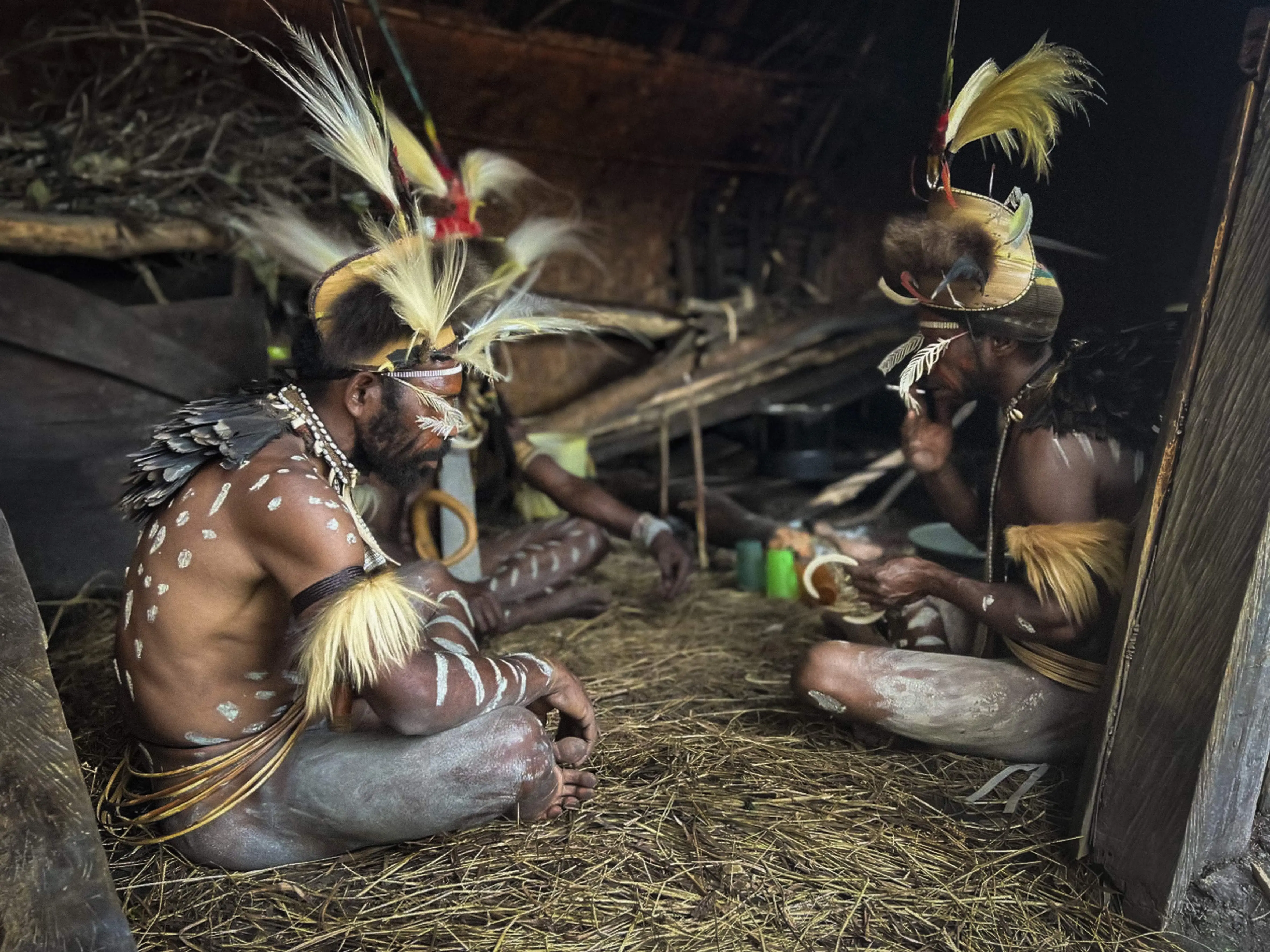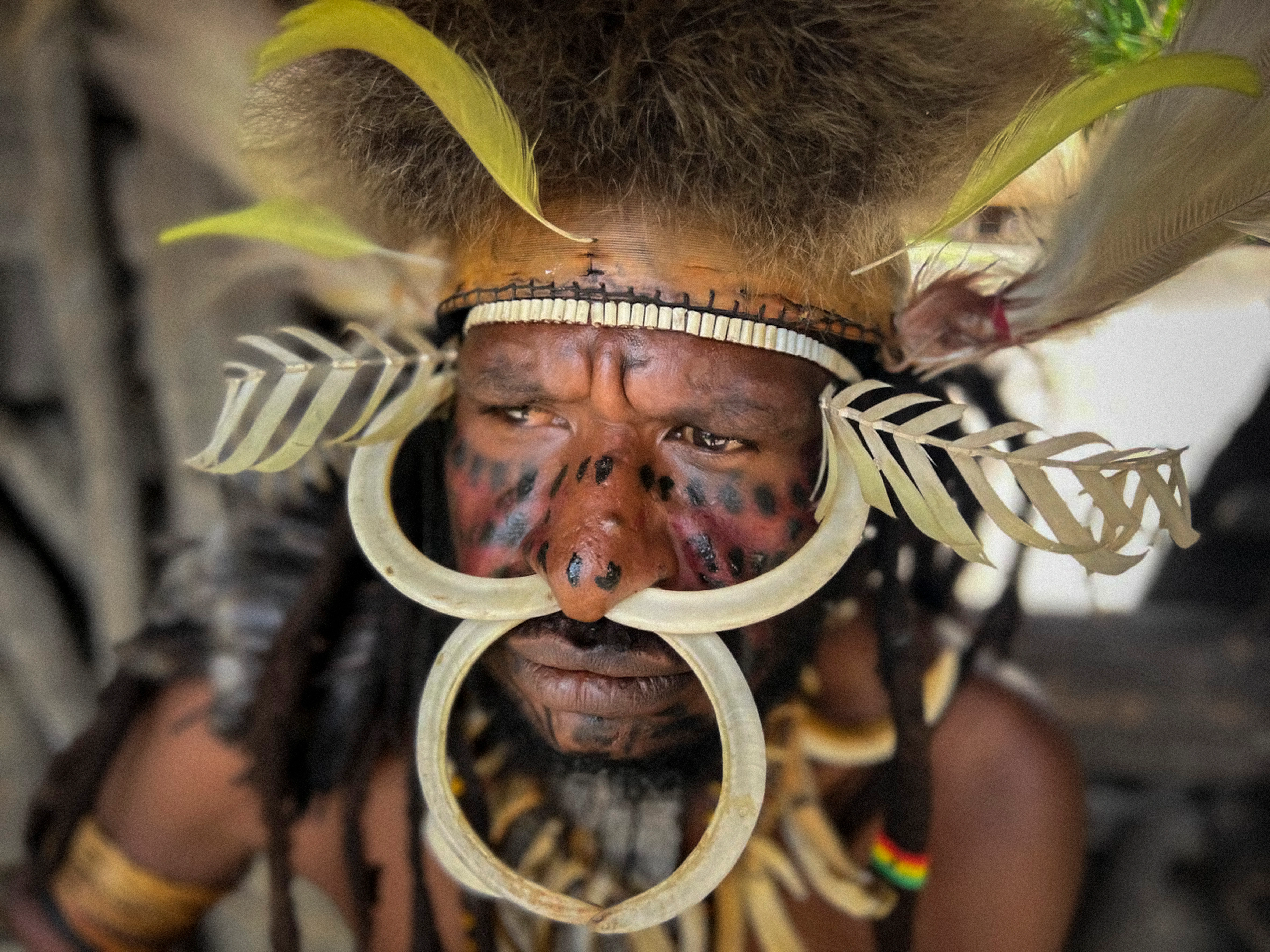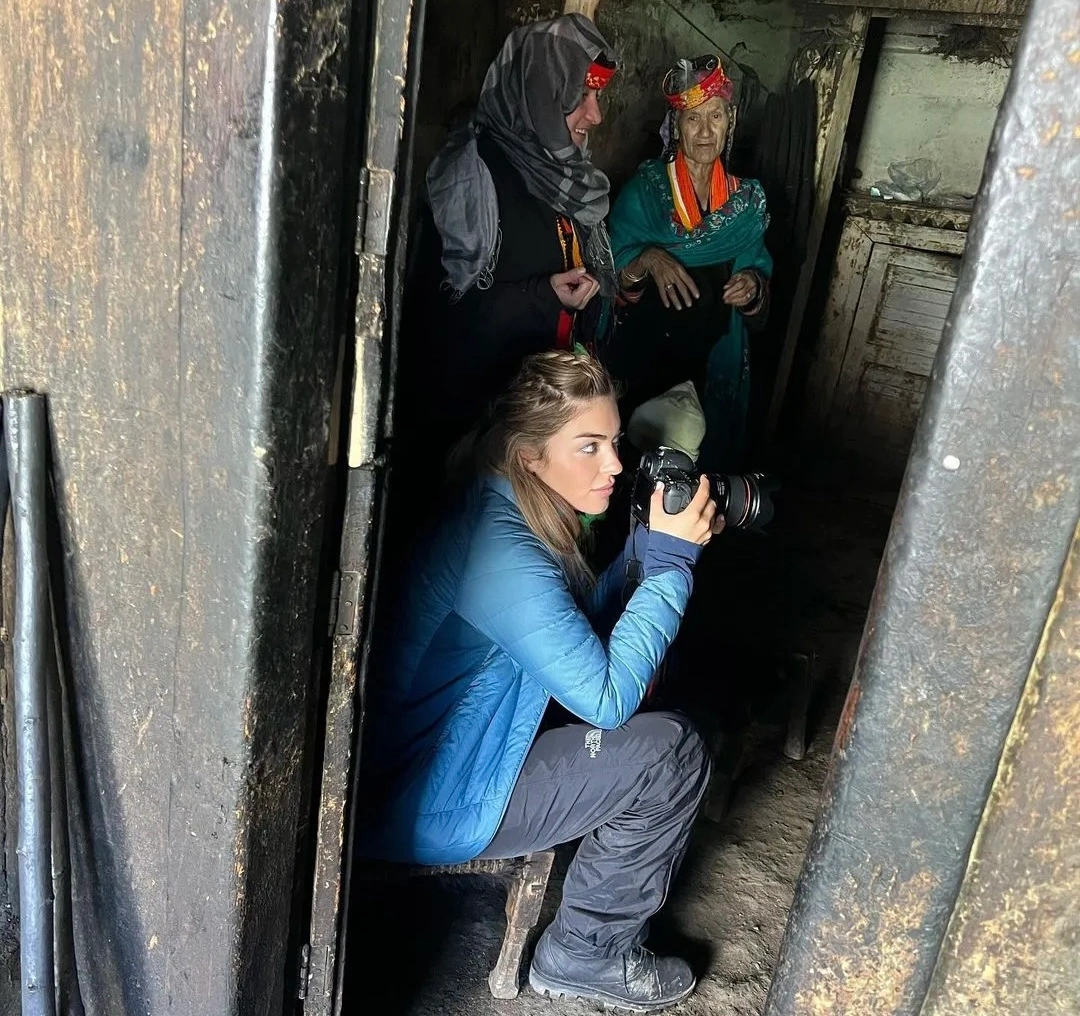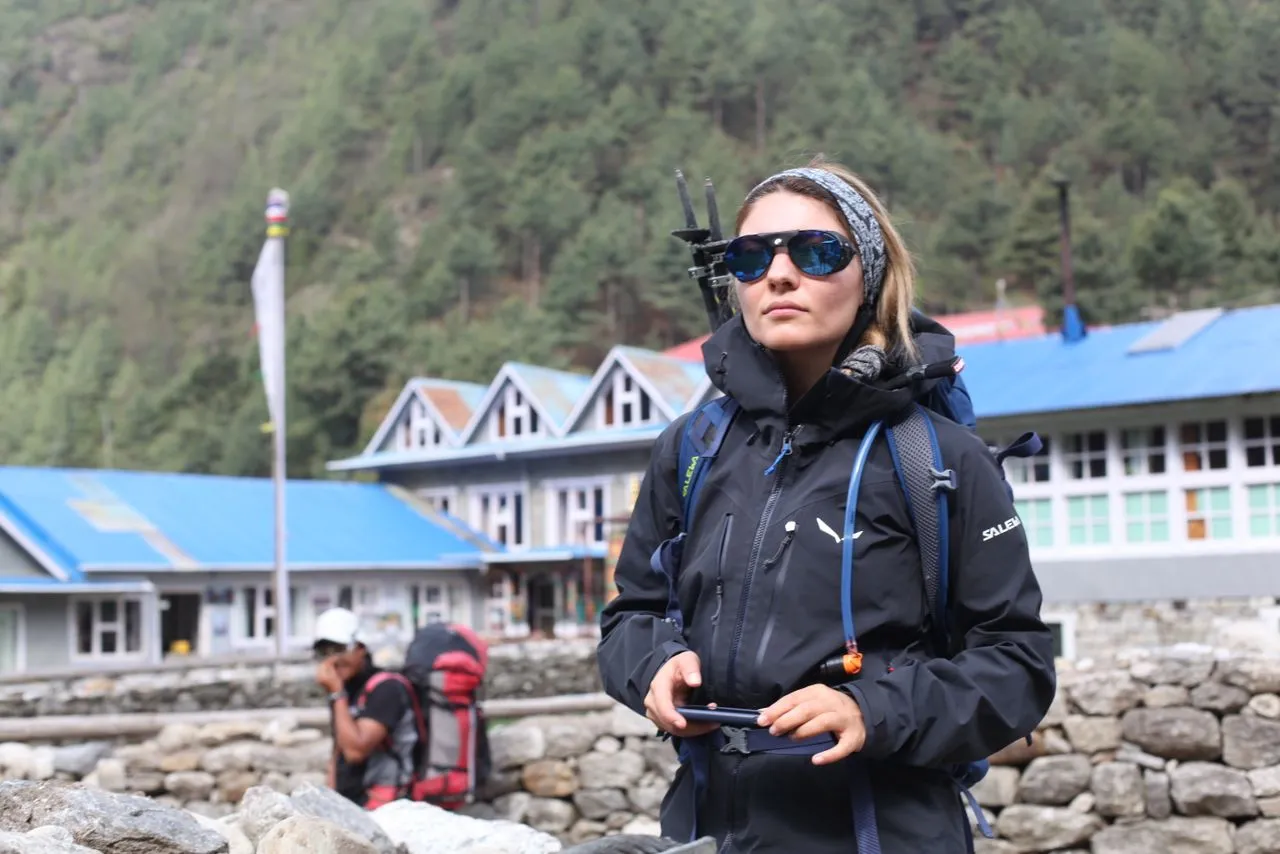Travelling to Papua was my childhood dream, a dream that had been forming bit by bit in my head for ten years. I never thought I would get close to it, but it was more than a dream; a desire to change my path.
After returning from the trip to the Pole, through one of my friends, I used to participate in the meetings organized by the Anthropology and Culture group. In the very first meetings, I realized that if the educational system, other than imposing a series of courses, helped us to know ourselves and find our interests, talents, capacities, and weaknesses, I should have been directed to the field of anthropology, the most exciting academic field that I encountered. I sometimes think of going back to university. During that period, I started reading the classic sources of anthropology. Reading books like Sanchez’s Children or Coming of Age in Samoa showed me that I need two things besides traveling:
One,
Patience: staying in a particular field, living with the natives, going beyond the surface to the depth of culture, and seeing their rituals from their sight.
Two,
Knowledge of observation, looking at details, recording, formulating, and analyzing what I have seen.
Things I have learned very little, but I still haven’t managed to live it practically.
In these excavations, I came across Malinowski’s works. Malinowski has a doctorate in physics and mathematics, but when he comes across Fraser’s Golden Bough book, which is one of the first sources that deal with the beliefs, customs, and rituals of primitive societies, he becomes interested in anthropology and heads to the Trobriand Islands in Oceania. Writing about what Malinowski has done is beyond my expertise, but his way of working was like a classroom for me: collaborative observation, precision, and insight in recording what he saw.I read in one of the publications, “Papua, the Paradise of Anthropologists”!
In the literature of early anthropology, these societies are called “primitive,” and many anthropologists of the first generation set their main field as the continent of Oceania, where the simple human mind can closely observe the history of human thought and the primary function of today’s complex institutions.
I started a journey from Indonesia and was still determining exactly where my destination was. Baliem Valley was the only address I had. Baliem Valley was chosen because of a film by Robert Gardner in the sixties. His film is Dead Birds, a term used by the Dane tribes for weapons and ornaments taken from the enemy during battle. This loot is displayed during the two-day victory dance after an enemy is killed. In advance, I had made an appointment with a local guide to see the Dane tribes.
I was wandering around small airports for nearly forty hours, since I was going from Bali to Papua, which does not have a regular flight route. One of these airports needed to be registered on Google Maps. The forests of Papua are home to large and small tribes that live in the heart of the vast tropical forests. For the first time, an exploration team working on the vegetation of that area encountered the Dane tribes, and their names were recorded. But the Deni tribe ranges from West Papua to East.
Tribes whose economy is based on hunting and gathering generally do not live in a common habitat, and a common totem binds them together. Finally, I reached a local guide who I don’t think knew more than a hundred words of English, but he was so kind and empathetic that you could generally have detailed conversations with these few words.
We were on the road for about a day; we drove parts of it, and the rest of the way, there was no road, and we walked through the forest. I lived next to a group of Danes, which consisted of approximately forty to fifty people, and they were considered a colony. The family structure in the sense of a specific marriage of a man and a woman did not exist there, and due to the high mortality of women during childbirth, the population of women was less than men. Next to this group, another group of people lived with a larger population and a better standard of living.
It is known that the pig was first domesticated by the Dane tribes, food that is used in formal receptions. Except for the abundant edible roots and forest fruits, the traditional planting of sweet potatoes was popular and was considered, to some extent, a commodity exchange rate. In the past, “plunder” was a way of providing food; groups attacked each other to obtain food resources. The government does not have much formality and influence in the forests of Papua, But now these wars are banned and have heavy punishments. Of course, these wars continue in their true form, But with the expansion of the tourism industry, it has acquired another meaning.
I woke up one morning, and everything was full of activity. Their men were dressed in traditional war clothes that contained their penises in several sheaths. They decorated their bodies with colorful flowers. Then, the men gathered together and drew things on the ground. Their arguments were very serious. Women also decorated their bodies with colored flowers in the traditional way.
These preparations were for the tourists who came with three big jeeps. The war trumpet was blown, and the war began, the battle with the Kanari tribe, But with bows and arrows and small spears. The men enjoyed this quest. It turned out that those plans and arguments were precise strategies of attack and retreat. There were certain rules for this war game. For example, when an arrow hits someone, he is killed and exits the game cycle. Women are the force behind the scenes, although they are involved in the actual battles.
After the archery game, the winner and loser groups will be determined, and the pig celebration will begin at the war’s end. The pig is wrapped in a banana peel and placed in a pit where hot stones are placed. Previously, the credit of a group was the number of pigs slaughtered in these parties, But in these tourist shows, pigs are generally cooked for tourists. There was such poverty in the region that all these shows in the form of war and parties in front of tourists seemed sickening to me. Tourists coming from their hotels to watch this show and coming back again.
In Baliem Valley, in that pristine and beautiful nature, luxurious hotels were built, and part of the entertainment of the travelers of those hotels was visiting the natives. Standing and watching them was like going to a zoo. I spoke to a couple who were trying to communicate with the natives. Their words reminded me of Nick Rousseau’s wild myth. He has a theory about the natural human condition and transition to a contractual condition:
“At the beginning of history, humans live in the wild and apart from each other. In the natural state, man is a completely intuitive being. The first humans were isolated, simple, and innocent.
During the transition from the natural state to the social life, a fundamental transformation occurs, awakening the sense of selfishness. The beginning of human troubles is that he compares himself with others in this society, becomes dependent on others, expands his needs, and loses his self-sufficiency. During this behavior of tourists, accompanied by gentleness and curiosity, I saw that Rousseau’s romanticism continued.”

That night, it started to rain terribly. The water had taken all the houses. The children were shivering from the cold. There was no proper pavement, and we were under a canopy until morning. The next day was sunny, and I decided to take photos. There was a decorated house where I was invited to take photos. While taking the portraits, I could see signs of malnutrition in every face of women, men, and especially children.
Their faces were depressed, sad, and confused. They were bored in front of the camera, But I noticed they were posing like a professional model. Only after a few days of living with them did I realize that these prearranged behaviors result from tourists’ behaviors. In recent years, the natives have found the appropriate figure and frame in front of the tourist’s camera. They took me to see an older woman who wanted a small amount in exchange for a photo. Most of the older woman’s knuckles were torn off.
In Dane tribes, it is customary to cut a finger joint when mourning for lost loved ones. She covered his face with his hands, and I took my picture. Everything seemed normal until I went back, and in the first simple search of the Dane tribes, I realized that there were dozens of photos of this woman with the same look. On the way back, I met Mark, whose father had set up a museum of Papuan handicrafts.
He and his father had spent years learning various local languages and studying the life of the natives. I talked to him about this situation. Has the tourism industry led to an improvement? Was it much worse before, or has the money brought in by tourists changed things a bit? He, who had witnessed fifty years of his father’s activity and had worked here for fifteen years, sighed. The answer was that everything is very complicated, much more complicated than it can be explained in a conversation.
In West and East Papua, the rules were different, But generally, the land was given to the natives, and the chiefs of the tribes had given it to the companies for small sums. These events happened at a stage when Papuans did not have a clear concept of money in mind. Although pacts, friendship, and strategic alliances have had a long-standing meaning in Papuan culture, most of these pacts were made for wars and trade, and giving up territory that was somehow linked to their history and myths has no meaning for them.

In the first stage, the companies carry out extensive deforestation, which has affected the animal and plant habitats of the region; the way of life of hunting and gathering edible roots has practically disappeared, which has affected the food poverty of the region.
By creating jobs, tourism has created a new economy in the region. However, in exchange for the transfer of lands, service, and low-level jobs have become the share of natives.
He believed that the central government had built a road to expand tourism and protect them, leading to more monitoring of native tribes. As a result, intertribal bloody conflicts have decreased to some extent. A little education and health has come, but this share does not have a ratio between what the companies benefit from this area. I told him I had read somewhere that this is the paradise of anthropologists. Regarding the relationship between colonialism and anthropology, he says that, basically, this field was created to study the natives and understand their habits so that military control and suppression of the native rebellion can be done more easily.
The next generation of anthropologists organized extensive studies on colonialism and tried to be the voice of the natives, but a small and selected part of the local community came to the aid of the companies and created an elite class that was not easy to deal with. I left the place that was supposed to be my paradise. I have taken a lot of films, photos, and videos of the natives. On the plane, I was thinking about how much these photos and videos are in line with enhancing the myth of the good savage. I opened and closed the Papua hard drive several times.
I am still trying to figure out the answer to this question. I only captured the night until the morning with my phone camera, which is a more accurate picture of the situation, the mess, the poor quality of the video, and my shaking hands. Until today, I have found a convincing answer using images.




